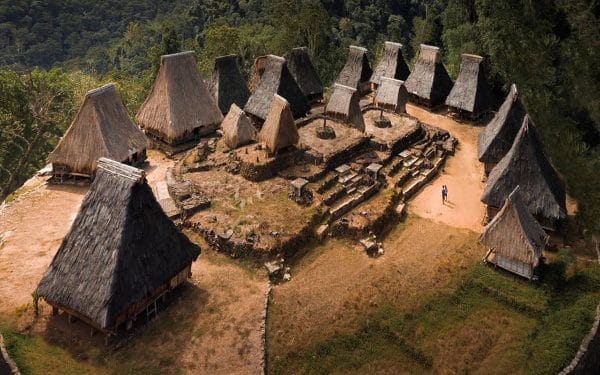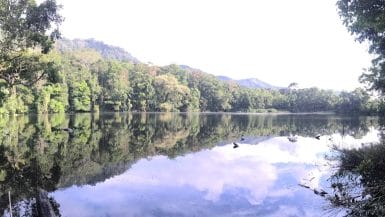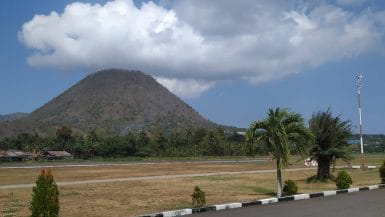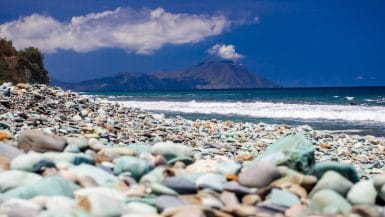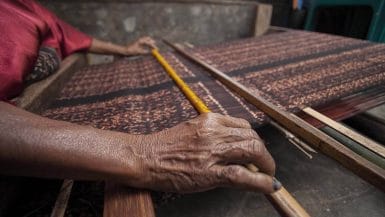Are you interested in visiting a village that still exists after almost a century? If so, Wologai Traditional Village in Ende district, East Nusa Tenggara, Indonesia, might be an option for you.
About the Wologai Traditional Village
In East Nusa Tenggara, Indonesia, you will find the village of Wologai. Specifically, it is located along the Trans Flores Road, Detusoko District, about 37 kilometers east of Ende Lio.
This traditional village is located about 1,045 meters above sea level and has existed for 800 years. You must sign the guest book before you can enter Wologai Village. It costs about 10,000 IDR per person.
One thing to note is that there you cannot take photos carelessly. You must first seek the locals’ permission to take pictures of traditional houses.
How to Reach Wologai Village
To get there, go to the HH Aroboesman airport in Ende. Then, you can use public transportation or rent a car for around 300 thousand rupiahs a day.
On the way, you’ll encounter winding roads and hills. Upon arriving, you will notice houses converging on the hilltop.
In about 50 meters, you will see a pine tree marking the boundary of the Wologai Village. According to legend, the ancestors planted a pine tree at the entrance.
Attractions in Wologai Village
In Wologai Traditional Village, there are 18 buildings, including five tribal houses and a large house. The tribal houses are located within the outer ring of Tubu Kanga and serve as a residence.
Among the names of houses in Wologai are Saopanggo, Attawolo, Saolabo, Lewabewa, Analamba, and others. They use the tribal house to store heirlooms and relics belonging to the tribe. Meanwhile, they only inhabit the big house during traditional rituals.
There is one form of traditional house building for each tribe, but each has its characteristics, such as carvings on the wooden poles of the house. Reeds used to cover the roof of the house in the past. These days, people use palm fiber to survive.
The Culture of the village of Wologai
Traditions in the Wologai village include the Naka Wisu ritual when constructing a house. This ritual describes how to cut trees in the forest as house pillars. It is customary to slaughter a chicken at noon to begin the ritual.
Besides that, the conical shape of Wologai houses makes them a unique buildings. A conical roof symbolizes the authority of traditional leaders, or elders, over ordinary people in traditional structures.
The Architecture of Wologai Traditional Houses
In fact, there are 16 flat stones arranged upright as the main pillars of a traditional house made of wood. The wood rests on 16 wooden stilts that support the structure.
The size of the house is usually 7 meters long and 5 meters wide. Then the height of the house is about 4 meters while the roof is about 3 meters.
In this village, stilt houses surround the highest courtyard, Tubu Kanga, where traditional rituals take place. It serves as an altar to place offerings for the ancestors and creator.
Lewu (under the house) was formerly used to raise livestock such as pigs and chickens. The middle room serves as a place for living, while the attic serves as a storage area for ritual items.
Specialty Coffee and Souvenirs from Wologai
If you are visiting Wologai, you shouldn’t miss drinking the traditional Wologai coffee. Besides coffee. Locals also process a lot of walnuts, which you can take home.
Make sure to bring Wologai souvenirs along with the food. Residents carve little wooden dolls from wood to serve as souvenirs. Another unique option is Wologai’s typical Bbu woven.
Time to Visit
There are two main rituals in Wologai village every year. Namely the harvesting of rice, corn, and beans (Keti Uta) in April and the mashing of rice (Ta’u Nggua) in September. Ta’u Ngu’a rituals reach their peak in ‘Pire’, where people stop carrying out their daily activities for seven days.
During this time, the Wologai people could not perform any work activities, such as farming and harvesting palm wine. The ceremony is reminiscent of the Nyepi ceremony in Bali.
After undergoing various ceremonies, the traditional community will take part in a Gawi ritual or dance in the courtyard of Tubu Kanga to signify happiness and togetherness.
Standing for 800 years, Wologai Traditional Village is one of the tourist destinations you should visit in Ende. Feel the sacredness in this village that has existed for almost a century by yourself.

